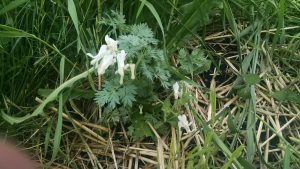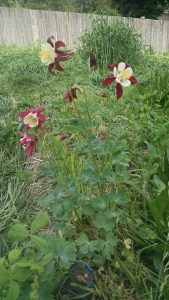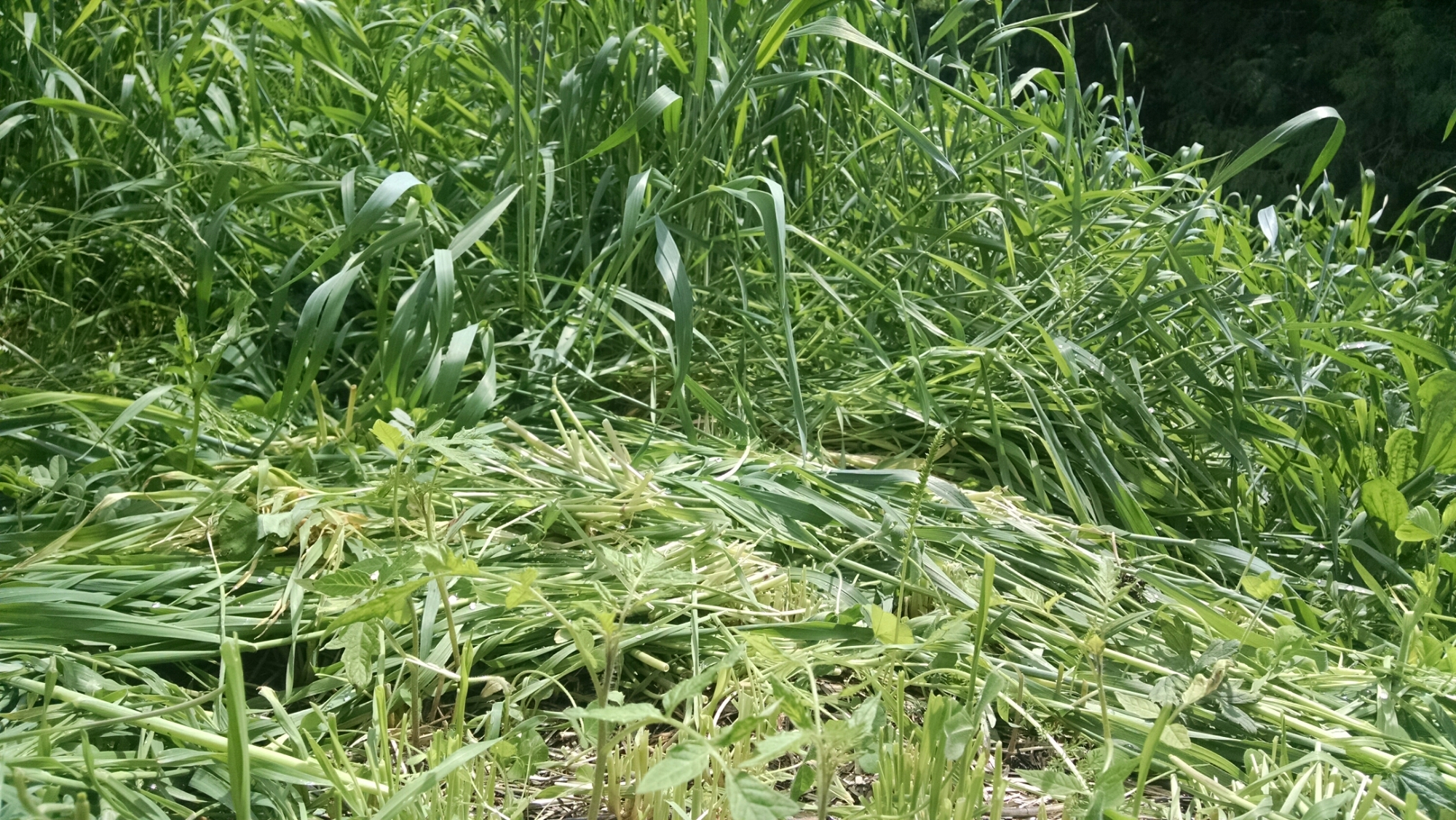Three weeks in a field of rye
This post is about what happens when an ill-timed cover crop goes crazy for three weeks, what we learned, and why we are glad to have had it despite the laborious work of reigning it in. First, though, an explanation for the recent lack of weekly-ness…
We were on a trip to do volunteer dental work south of Ensenada. The first week in Mexico we had very little access to internet, so I didn’t post. The second week we got internet, and also the flu, so when we weren’t seeing people I was laying in bed. The third week we were on the road home, and I still had the flu.
And that concludes the excuses. Back to the regularly scheduled programming. : )
Cover crop takeover
The day before we left on our trip, we cut the cover crop back to the ground and transplanted all our little seedlings. Tomatoes, okra, potatos, herbs, sunchokes, peppers, and more. We also randomly scattered seeds for about 30-40 different vegetables and herbs. We crossed our fingers, and left for just over three weeks. When we got back, it looked like this (it has been partially cleared in the picture):
The cover crop of rye (with a little clover) grew two feet while we were gone. The bad news: it completely overgrew everything else that was planted. Oops. The good news is that apparently everything we planted is doing fine, if a bit hungry for light. I’m guessing that it took a week for the rye to overtop the transplants, and another week after that to completely shade them, so averaging it out they only missed maybe a week and a half worth of sun. Not too bad. We’re in the process of painstakingly cutting away the straw by hand from around the seedlings. It’s kind of fun, like an easter egg hunt.
What didn’t fare as well as the transplants were the potatoes and the garlic. Those plants were much more mature, and seem to have felt the lack of light much more intensely. The garlic was mostly pressed over by dense growth of rye, and a lot of the potatoes are yellowish and sad looking. It is still early in the growing season, so they may recover, but I expect this to cause significantly reduced yields.
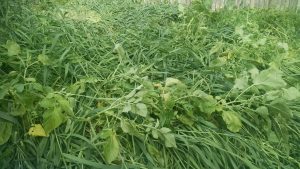
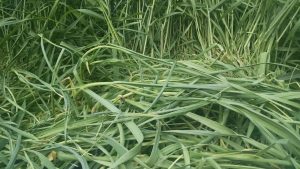
Now the good news. The tall stalks helped protect the transplants from the sun, helped collect dew at night and through transpiration raised the surface humidity during the day. I have little doubt that this helped them survive three weeks of no watering after transplanting (we didn’t even water the day we put them in). Part of the goal of all this is to be able to garden with little or no irrigation, so happy transplants with three weeks of total water neglect is pretty sweet.
And more good news – with chopping and dropping this new growth, we’ve significantly increased the depth of mulch on the garden. Heading towards dry summer, this is very important. While it’s been quite a bit of work to clear it out, I’m really glad to have all that extra organic matter on the surface.
Last bit of good news: there was a lot of buttercup growth in the paths, but the cover crop almost entirely prevented intrusion into the beds. There were just a few easily chopped runners deal with. They aren’t going to send a lot of growth into such a shady area. And guess what got chopped and dropped? All that buttercup foliage in the paths. With a dose of rye straw over the stumps for good measure. That’ll keep them down nicely while our crops keep getting taller.
Lessons learned
If you chop and drop a grass cover crop, expect it to shoot back really strongly. In retrospect, duh. What we’ll try next time is simply bending and bruising over, so hopefully we don’t trigger a burst of vertical growth, while keeping it out of the way. Crop circle style! Hopefully that we we can have a living mulch, and give the transplants or seeds time to get their own height before the cover crop bulks up again.
Also, we’ll shoot for better timing. We put the beds in in February, and planted the cover crop then. I knew it was not the best time for a cover crop, but the beds didn’t exist before then, so we couldn’t have planted it earlier. And despite the extra work of taming am ill-timed rye field, I’m very glad we put it in.
True fertility comes from plants moving solar energy into sugar and pumping it underground to feed the microbes that in turn feed everything else that grows. Real soil is alive – literally, the most important parts of it are tied up in living organisms. They lock up the carbon that stores water, they bring water and nutrients to plant roots, and even sometimes from one plant or tree to another. All of this life is fed underground by plant roots, and on the surface by dead plant material. Because of the rye, our transplants went into soil that is blossoming into life instead of soil that was in the process of starving.
Next year, we’ll plant cover crops in the fall. And as our perennials mature, and less area is spent on annuals, we won’t need as much temporary cover cropping, which will save even more time and effort.
Bonus: flowers
Some of our flowers are starting to bloom!
